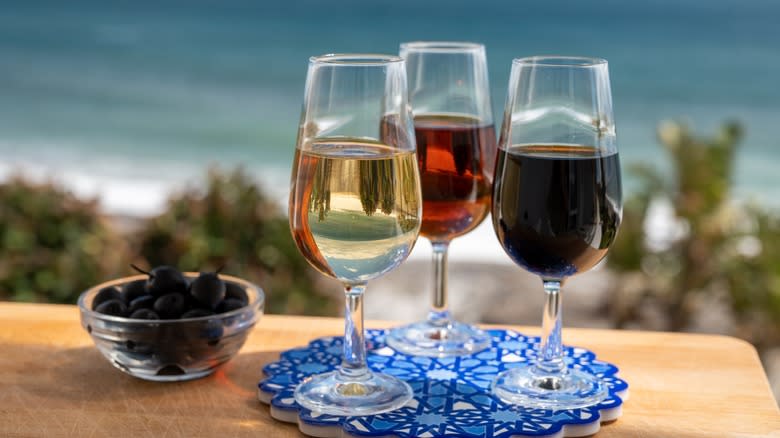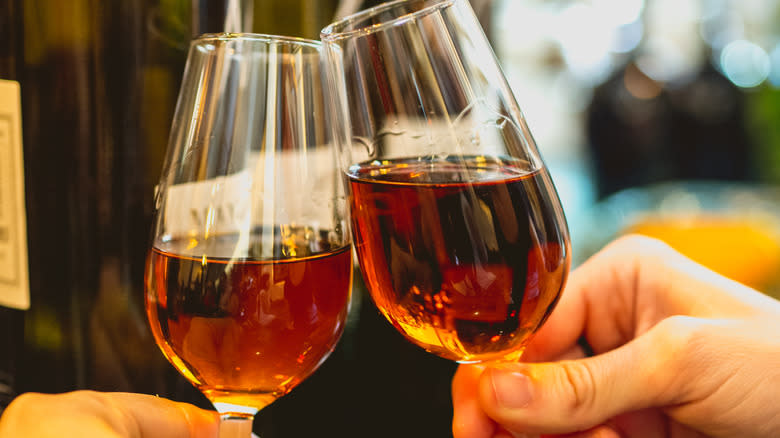What Makes Palo Cortado Sherry Uniquely Rare And Expensive

Especially in the United States, fortified wines are an underappreciated category. Fans of both spirits and vino can converge in the style, which offers complex flavors by adding a distillate to a grape-based fermentation. And when it comes to a malleable expression fit for sipping, sherry is an incredible option. This complex, barrel-aged alcohol hails from a regulated region in Southern Spain, typically delineated into seven categories. Separated based on the production process, utilized grape, and location, this beverage offers an impressive range of offerings.
Out of all these expressions, the most enigmatic is the Palo Cortado. It starts its life destined for a dry, lighter-bodied sherry, like a fino and manzanilla. These styles are aged surrounded by flor, an active yeast that creates an oxygen-free environment in the barrel. However, in Palo Cortado's case, the process goes awry, and the delicate yeast environment is ruined. As a result, the booze meets some oxygen at the end of its process and takes on a more full-bodied character. It's a shifting style, encompassing oloroso-like nutty and caramel notes, but with a balanced fino dryness. As a result of its complex emergence, it's the rarest sherry style.
Read more: 13 Liquors Your Home Bar Should Have
Palo Cortado Sherries Emerge From Yeast-Based Aging Exposed To Oxygen

It's said that Palo Cortado sherries came about completely by accident, which furthered their elusive nature. Winemakers weren't always sure what caused the flor yeast coating to collapse, but factors often included the employed grape juice, cask, and unintentional yeast. Today, the methodology has improved the creation of the style, with nearly all major producers including an expression in their lineup. Nevertheless, it remains the least produced sherry type, with a great deal of expertise going into a bottle. Such factors have led to its higher price -- although a buying a bottle is still worthwhile.
Winemakers carefully select young wine musts, employ a high-quality cask, and control other stages of the production process to produce the style. Each cellar has its own fine-tuned process, and as a result, Palo Cortado sherries vary from one producer to the next. They'll beautifully meld notes ranging from citrusy to fruity, with tobacco undertones, all rounded with a lactic finish. The result is complex, nuanced, and balanced, meaning it's a sherry surely worth the price tag.
Read the original article on Tasting Table.


